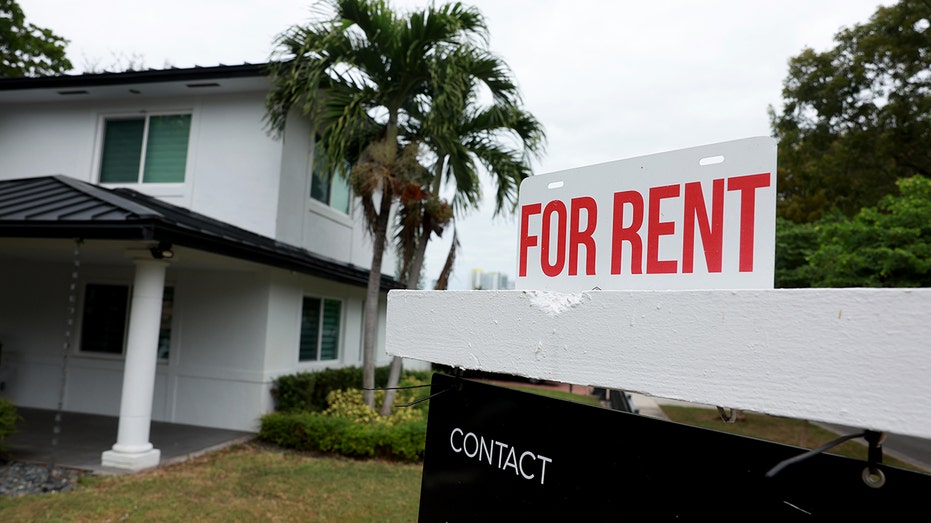Housing affordability crisis is a ‘major problem’ for the US economy
The Bahnsen Group founder and CIO David Bahnsen surveys the real estate market as younger homebuyers struggle with the ongoing housing crisis.
Home evictions are on the rise in several major cities nationwide as Americans continue to grapple with the ongoing cost-of-living crisis.
Eviction filings over the past year are up more than 15% compared with the period before the COVID-19 pandemic began in 10 cities across the country, according to the Eviction Lab, a research unit at Princeton University. The Eviction Lab tracks 10 states and 34 cities.
However, the problem is noticeably worse in five cities, where the eviction rate is at least 30% higher than it was before the pandemic started.
WHY CAN'T YOU FIND A HOME FOR SALE?

Aerial view of skyscrapers in downtown Houston, Texas. (iStock / iStock)
Here is a look at where evictions are rising the fastest:
Gainesville, Florida:
In Gainesville – a college town best known for the University of Florida – there were 1,627 eviction filings as of June. That marks a 46% surge, relative to the pre-pandemic average.
MORTGAGE CALCULATOR: SEE HOW MUCH HIGHER RATES COULD COST YOU
Minneapolis-Saint Paul, Minnesota
Minnesota has seen 11,696 filings this year, a 44% surge when compared to the typical level seen before the pandemic started.
Las Vegas, Nevada
Las Vegas has seen a 43% leap in evictions, with 47,741 filings so far this year.

Las Vegas, Nevada, also ranked high on the list. (iStock / iStock)
Houston, Texas 42%
Evictions in Houston are up 42% when compared with the average pre-pandemic level. As of June, there are about 82,957 filings, according to the Eviction Lab data.
Columbus, Ohio 35%
Columbus has also seen a spike in evictions. As of June, there have been 35,130 filings, a 37% increase from the pre-pandemic average.
GET Gxstocks ON THE GO BY CLICKING HERE
One reason for the uptick in evictions is the increase in rent prices. Rent has been driving inflation for months as pandemic lockdowns, pent-up demand and record-high housing prices sent costs soaring.
High rents are a concerning development because more expensive housing costs most directly and acutely affect household budgets. Roughly 34% of households are renters, according to Census Bureau data, but that figure is even larger for lower- and middle-income families. More than half – roughly 52.6% – of households with family income that is below the national median of $31,133 are renters.

A "for rent" sign is posted in front of a home on Dec. 12, 2023, in Miami, Florida. (Joe Raedle/Getty Images / Getty Images)
Households, in general, spend about 7% of their annual expenditures on rent, while households without college degrees spent nearly 10% of their total expenditure on rent in 2020.
There are several reasons for runaway rent costs, including high demand as steep prices and mortgage rates locked many would-be homebuyers out of the housing market. Low inventory and a pandemic-induced demand for more space also explains the increase.
Single-family home rents rose 14% in 2022, according to CoreLogic.




